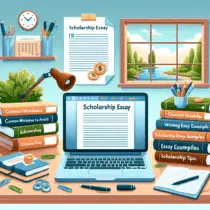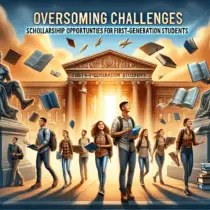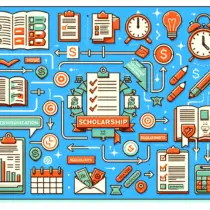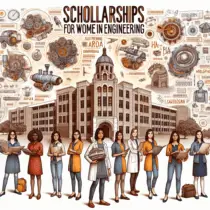Applying for scholarships can be a daunting task. The application process often includes writing an essay that can make or break your chances of receiving the scholarship. Writing a winning scholarship essay requires careful planning and execution. This article provides tips, examples, and common mistakes to avoid when crafting an essay that stands out.
Understand the Prompt
One of the most important steps in writing a scholarship essay is understanding the prompt. Scholarship prompts vary widely and might ask about personal experiences, future goals, or views on specific issues. It’s crucial to read the prompt carefully and ensure you understand what is being asked before you start writing.
Research the Organization
Before starting your essay, take some time to research the organization offering the scholarship. Understanding their values, mission, and goals can provide valuable insights into what they are looking for in applicants. Tailoring your essay to align with these aspects can significantly increase your chances of success.
Create an Outline
Planning ahead makes writing easier and more effective. Create an outline before you start writing your essay. An outline helps organize thoughts and ensures that all points are covered logically.
Example Outline:
Introduction
- Hook: Grab the reader’s attention with an interesting opening.
- Thesis statement: Summarize the main points.
Main Body
- First point: Discuss the first main idea with supporting details.
- Second point: Provide another main idea with examples.
- Third point: Present the final supporting idea.
Conclusion
- Restate thesis: Summarize key points made in the essay.
- Closing remark: End with a strong statement or call to action.
The Introduction
The introduction sets the stage for your entire essay. It should be engaging and informative.
- Grab Attention: Use a compelling story or quote that relates to the prompt.
- Create a Thesis Statement: Clearly state what you will discuss in your essay.
Example Introduction:
“As I stood on the podium holding my first-place trophy in the robotics competition, I realized how much I had learned about teamwork and perseverance. These experiences have shaped my desire to pursue engineering at an advanced level.”
The Main Body
The main body of your essay should elaborate on your thesis statement by providing detailed examples and arguments.
- Avoid Generalities: Be specific about experiences and achievements.
- Tie Back to Prompt: Ensure each paragraph relates to the prompt.
Use Anecdotes or Personal Stories
Use personal anecdotes or stories that highlight relevant skills or experiences. This makes your essay more relatable.
Avoiding Pitfalls
While discussing personal stories, avoid irrelevant details that do not add value to your narrative.
Main Body Example Paragraph:
“My experience volunteering at the local animal shelter taught me invaluable lessons in compassion and responsibility. By dedicating weekends over two years, I learned how small efforts can make significant impacts on both animals’ lives and community well-being.”
The Conclusion
A strong conclusion reinforces what has been discussed without introducing new information.
- Leave a Lasting Impression: End with a powerful closing sentence.
Example Conclusion:
“Winning this scholarship would not only help me financially but also affirm my commitment towards achieving higher education goals while giving back through projects aimed at fostering sustainable development within underprivileged communities.”
Common Mistakes to Avoid
- Ignoring the Prompt: Ensure that you address all parts of the prompt. Straying off-topic can hurt your chances.
- Poor Structure: A well-organized essay helps readers follow your arguments and understand your points.
- Generic Statements: Specific examples and personal stories make your essay unique and memorable.
- Grammatical Errors: Proofread your essay multiple times or have someone else review it. Errors can distract from your message.
- Lack of Passion: Convey your enthusiasm for the subject and the opportunity. Genuine passion can make a significant difference.
Additional Tips
- Be Honest: Authenticity resonates more than exaggerated achievements.
- Show Growth: Reflect on how experiences have shaped your perspective and goals.
- Keep it Concise: Adhere to word limits and avoid unnecessary fluff.
- Seek Feedback: Get input from teachers, mentors, or peers to refine your essay.
By following these tips and avoiding common pitfalls, you can craft a compelling scholarship essay that stands out from the competition. Remember, your essay is a chance to showcase who you are beyond grades and test scores, so make it count. Good luck!






